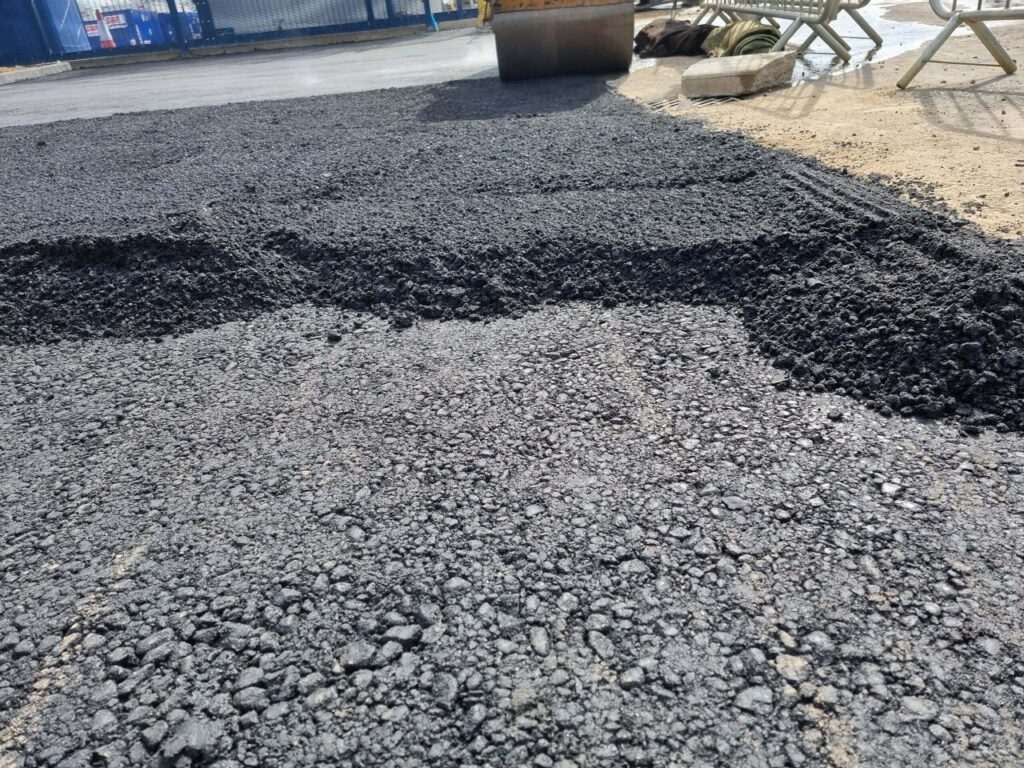Tarmac vs. Gravel: Choosing the Right Surface for Rural Roads
Introduction: Rural roads are the lifelines of many communities, connecting homes, farms, and businesses to the wider world. Regarding surfacing these roads, two standard options are often considered: tarmac (asphalt) and gravel. Both materials have advantages and drawbacks, and choosing the right surface is essential for maintaining rural road functionality. In this blog post, we’ll compare tarmac and gravel to help you make an informed decision.
Tarmac: The Pros and Cons
Pros:
Durability: Tarmac roads are known for their longevity and durability. They can withstand heavy traffic and the rigours of rural life.
Low Maintenance: Tarmac roads typically require less maintenance than gravel roads. They are less susceptible to washouts and potholes.
Smooth Surface: Tarmac provides a smooth, even surface, making it ideal for driving, cycling, and even walking. It reduces dust and mud, improving road safety.
Snow Removal: Tarmac roads are easier to plough and maintain during snowy or icy conditions, ensuring year-round accessibility.
Cons:
Cost: Tarmac road construction is generally more expensive than gravel. The initial investment can be a significant factor for budget-conscious communities.
Heat Absorption: Tarmac can absorb and retain heat, making it less suitable for extremely hot climates.
Environmental Impact: Tarmac production can have a higher environmental footprint than gravel. However, sustainable practices, like using warm-mix asphalt and recycling old tarmac, can mitigate these concerns.
Gravel: The Pros and Cons
Pros:
Affordability: Gravel is a cost-effective option, making it an attractive choice for communities with limited budgets.
Easy Maintenance: Gravel roads are relatively easy and inexpensive to maintain. Gravel can be added to fill potholes and ruts as needed.
Better Drainage: Gravel allows for better drainage, reducing the risk of standing water and erosion during heavy rains.
Cooler Surface: Gravel reflects more sunlight and absorbs less heat than tarmac, making it suitable for hot climates.
Cons:
Dust and Mud: Gravel roads can generate dust in dry conditions and become muddy in wet conditions, which can be a nuisance and affect air quality.
Snow Removal: Snow removal can be more challenging on gravel roads, as ploughs can displace gravel and create uneven surfaces.
Limited Lifespan: Gravel roads generally have a shorter lifespan than tarmac roads and may require more frequent maintenance.
Choosing the Right Surface
The choice between tarmac and gravel depends on various factors, including:
Budget: Consider your available budget for road construction and maintenance.
Climate: Assess the typical weather conditions in your area, including temperature, precipitation, and seasonal variations.
Traffic: Evaluate the volume and type of traffic using the road regularly.
Maintenance Capacity: Determine your community’s capacity to maintain and repair the road.
Environmental Concerns: Consider the environmental impact and sustainability goals of your community.
Conclusion: Both tarmac and gravel have their merits for rural roads. The choice ultimately depends on your specific circumstances and priorities. At Gravesend Driveways, we have extensive experience in road construction and can help you make the right choice for your community’s needs. Whether it’s a durable tarmac road or a cost-effective gravel surface, we provide expert guidance and reliable construction services.
Call us on: 01474 551 689
Click here to find out more about Gravesend Driveways
Click here to complete our contact form and see how we can help with your driveway needs.

